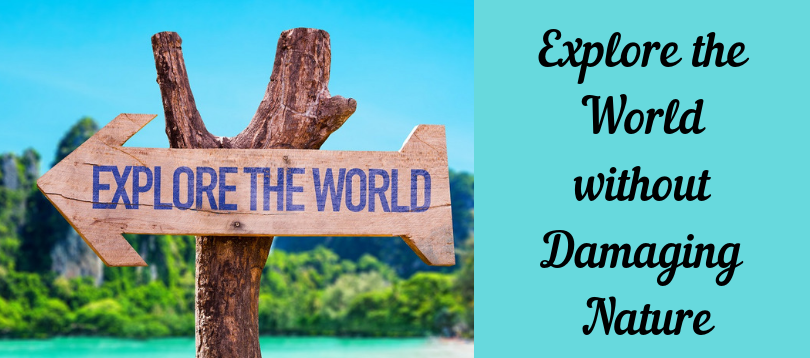A large number of natural resources, concentrated within one small territory and their intensive use, the appearance of many residential and non-residential buildings and structures on the same territory influences the nature of this territory. And this influence is not positive.
The degree of this influence depends on the scale and type of activity of tourist organizations. Every tourist has an impact on the surrounding nature, but it is insignificant. The main problems begin when the flow of tourists increases and the consumption of tourism resources increases. A natural territory can survive without permanent changes made by a certain number of tourist visits. When this condition is exceeded, the degradation and gradual destruction of this unique natural territory begin. It is possible to stop this process only with human intervention through restrictive and remedial measures. The impact of tourism on the environment can be divided into several categories:
The impact of tourism on the environment can be divided into several categories:
Impact on geological resources: mountain landscape, minerals
Here the main damage to nature is done through recreational activities: spelunking and climbing. It manifests itself mostly in changes in the composition of rock deposits, the destruction of stalactites, stalagmites in caves, environmental pollution (tourists leave behind a mountain of garbage), and the removal of fossils for souvenirs.
Impact on soil
Tourism causes the main damage to the soil through the destruction or movement of the upper fertile soil layer (construction of buildings, structures, car parks, roads, footpaths), degradation or complete destruction of vegetation as a result of compaction and soil tamping (the formation of new paths and roads). On dense, compacted soils, the flow of water after rain changes, leading to the formation of ravines and waterlogging. After visiting, tourists in the natural area remains a large amount of organic debris, which changes the composition of the soil.
Impact on water resources
The main negative impact is on groundwater, open freshwater reservoirs and sea water. The negative impact on groundwater occurs due to the harmful effects on the soil; on open reservoirs with fresh water, as a result of recreational activities of people, the composition of water changes, flora and fauna change. Due to unsatisfactory wastewater treatment in cottage villages, tent camps of recreational zones and the discharge of these waters into water bodies, water is contaminated with bacteria, and intensive growth of algae takes place, which leads to a gradual waterlogging of the area.
At the seashore, there is a large number of hotels, recreation centers, etc., which use various chemicals for their activities (chlorination of water in swimming pools), which often get directly into the sea and damage its inhabitants (animal and vegetable).
Effect on vegetation
This effect manifests itself in the gradual destruction of forests and grass cover. There is a trampling down of the near-earth layer of vegetation, soil compaction, as a result of depletion of the flora, there is a change in the composition of the fauna of the natural community. Due to the destruction of some plant species (used as food, in bouquets or in the herbarium), they are replaced by others, often weedy, brought from other territories. Due to changes and depletion of plant communities, the processes of blowing and erosion of the soil begin.
Summarizing all the above, we conclude that tourism causes irreparable damage to natural territories and communities. And this harm is greater, the more economically and politically unstable the state in whose territory the natural zone is located. For the active tourist use of natural territories in economically and politically developed countries of the world, the potential of the protected area is calculated and adhere to strict environmental protection laws.






